
Until recently, I had only been a horse and hound person. But one night, a goat won my heart. I was doing night duty at the yard, and the vet came out. It was late, and the vet had picked up her daughter and their pet goat.
The goat soon hopped out of their car and started investigating this new place. The little goat was an absolute marvel. I watched slack-jawed while the vet’s 10-year-old daughter told the goat to jump up on the stable railing, down, walk toward her on its back legs, and come when called.
It was amazing! The little goat was like a dog but cuter in a whole new way. This got me thinking about goats, training them, and whether they make good pets. The vet laughed and said that I should prepare myself for a “very” naughty kid and showed me photos of her chewed-up payslip as proof.
Hooked on goats, I began reading up and contacted a few goat breeders before I dove in and started my own goat herd. You may wonder whether goats can really be trained or if that was just a special goat. Here’s what I found.
Can goats be trained? Goats are incredibly intelligent, and they can be trained. As with any domesticated animal, goats require attention, repetition, and reward to train them for tricks and daily tasks like standing to be milked or allowing handling when injured. However, a goat is a prey species, and they don’t always take to the same training methods as a dog. Instead, you would do well to look up a horse trainer, as the training paradigm is similar.
How to Train Your Goat—It’s Easier Than a Dragon!
Training your goat requires that you spend time with your goat, work with them from a young age, and consistently treat them the same way for consistency. Before you can try and teach your goat to walk on its hind legs and jump through hoops, you must start by bonding with your goat.
Bonding With Your Goat
Whether you want to train your goat and possibly travel to show them, you should form a respectful bond with your goat. A wild goat isn’t fun to have around the homestead. So teaching a goat to accept touch, let you handle them, and even like being near you is ideal for helping your goat become sweet on you.
Great bonding activities with your goat are to feed them and work on having them accept you being in closer proximity (if the goats are wild). Tasty treats like carrots and some fresh leafy greens can work wonders for having your goat eat out of your pocket.
From there, you can work on grooming your goat, touching them, and spending more time with them. Part of this is to have your goat accept a collar and enjoy having it on.
The essential ingredients for any future training lie here. Don’t skip it.
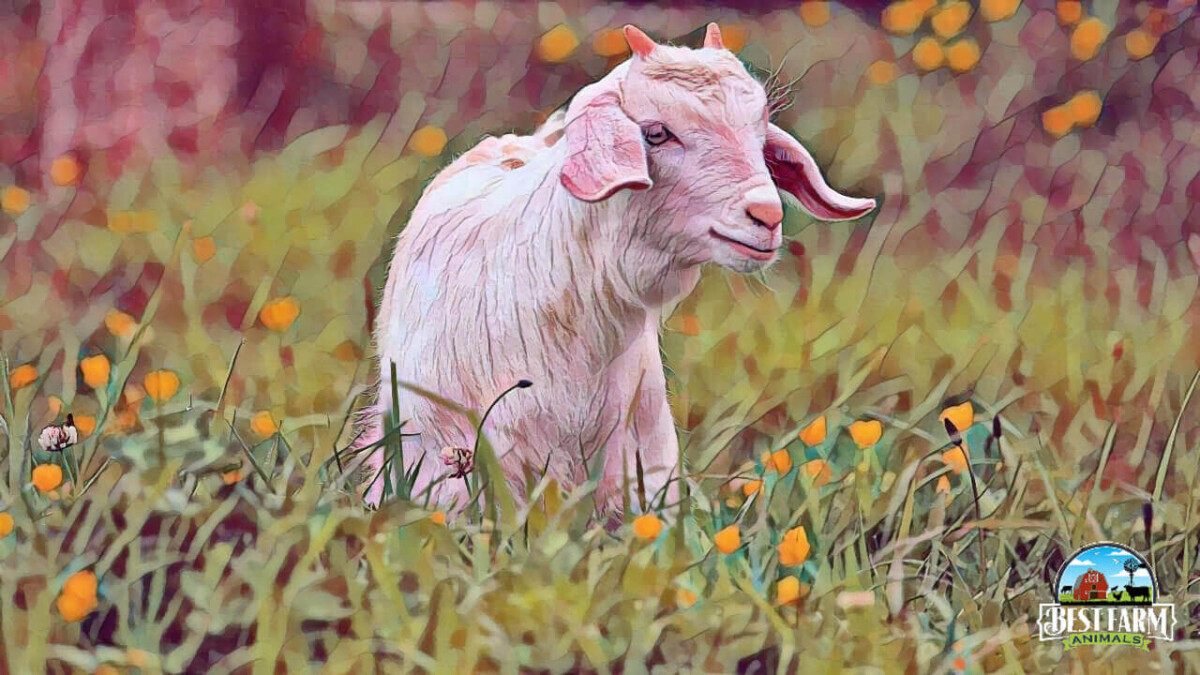
The Training Mindset … for Goats
You may believe you have trained dogs before, so why not goats? However, in training goats, it is essential to really understand the goat mind.
Goats love to inspect everything by chewing on it, which can be challenging when training. Another telling aspect of goat training is that using physical correction or punishment doesn’t work with a goat.
Smacking your goat because they were “naughty” won’t improve anything. In fact, the only thing violence accomplishes is to scare your goat and sever your bond.
There are a few different approaches to goat training, and here are some methods.

Reward Vs. Punishment: What Works for Goats?
Goats don’t understand punishment. In the wild, goats all graze as a herd, and there is no concept of having to be better to be useful. Since goats are grazers, they are constantly looking for something to chew. Using this instinct, you can win your goat over by offering them something nice to eat when they have performed as asked.
Use this approach for small actions during the day. Teaching your goat to jump into the car can be celebrated by offering your goat a healthy treat.
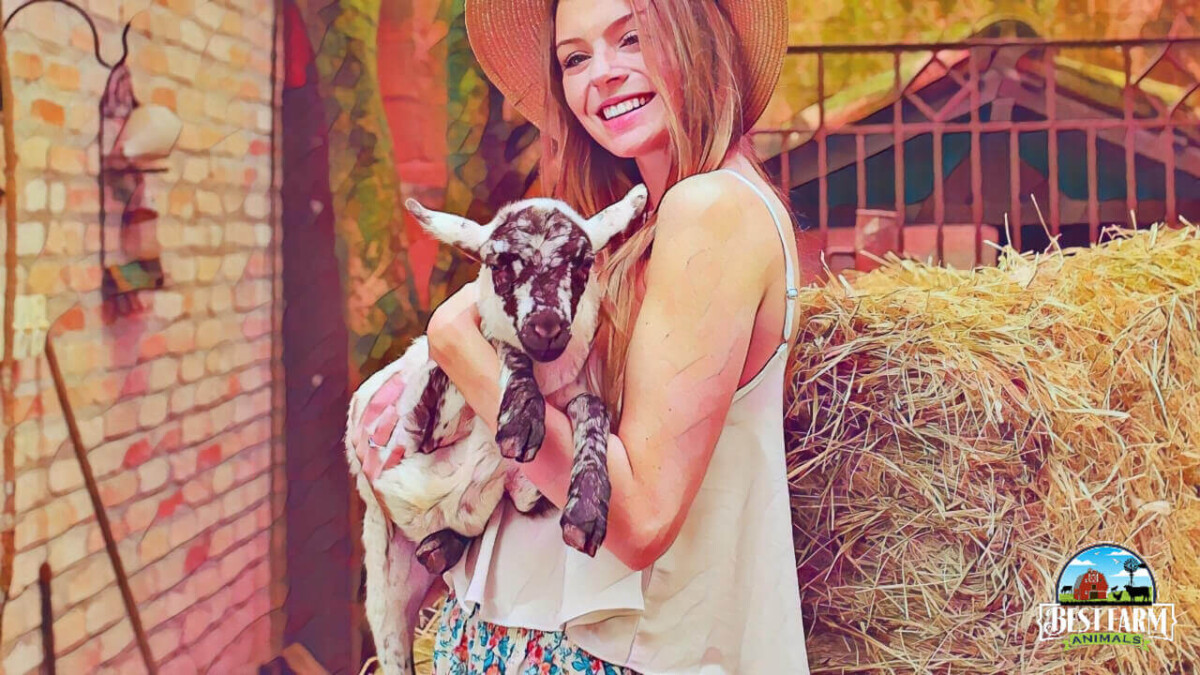
Positive Reinforcement
If feeding treats isn’t your idea of fun, you can try to work with positive reinforcement while training your goat. Reward your goat with positive actions when they do something wrong.
For instance, if your goat chews on the dining room furniture, you would avoid smacking your goat. Instead, you would reward the goat for chewing the sticks in the garden and leaving your valuables alone. The reward would be verbal praise, relaxation time, and stopping the “ask” for a specific behavior by the goat (lessening pressure).
Tricks and How to Get a Goat Trained
So you’ve decided to train your pet goat to do amazing tricks and entertain people, but where do you start? It’s simple. With goats (and many animals), it all starts from the easiest to the most difficult levels of their natural abilities. Start with what your goat can do, then encourage them to do what comes next: to make something natural, really special, and unusual.

With complicated tricks, it’s essential to break things down into basic parts, reward as your goat accomplishes each part, and finally put the parts together to finally achieve a difficult trick.
Basic Goat Training 101
It’s time to start training. Ensure you have a safe space to work in, where your goat can’t run away and hurt themselves. A small goat pen is an excellent place to work, or in a round pen if you have one. Have some treats, grooming utensils, and a leash and collar handy.
Decide what you want to work on today.
Training is a conscious act but can also be about fun and connection. So decide what your goat can do, what they haven’t mastered yet, and what they need to learn to do. Prioritize what to teach your goat.
Aside from the initial bonding, having your goat accept your touch and allowing you to groom them, it’s magical when your goat comes to your call.
1. Come When Called
Having your goat come when you call is a simple matter of bribery and consistency. While I certainly won’t encourage bribery when training your goat to do tricks and other amazing things, it is essential at the start of your journey together.
If your goat is still young enough to bottle feed, you will find they naturally come when you call. Ensure you have a special call in a unique tone of voice that you use each time they get fed. Even if your goat is already with you, call in this tone of voice, and they will associate it with good (yummy) things.
With an older goat, use the same approach. Call your goat in a friendly tone of voice at feeding time, using a specific name to call them. I recommend a short one or two-syllable name. If you’re going to call your goat Mississippi Mud Pie, you may need a change in strategy (or a very, very clever goat). Short names work a treat and will have your goats coming to your call in no time.
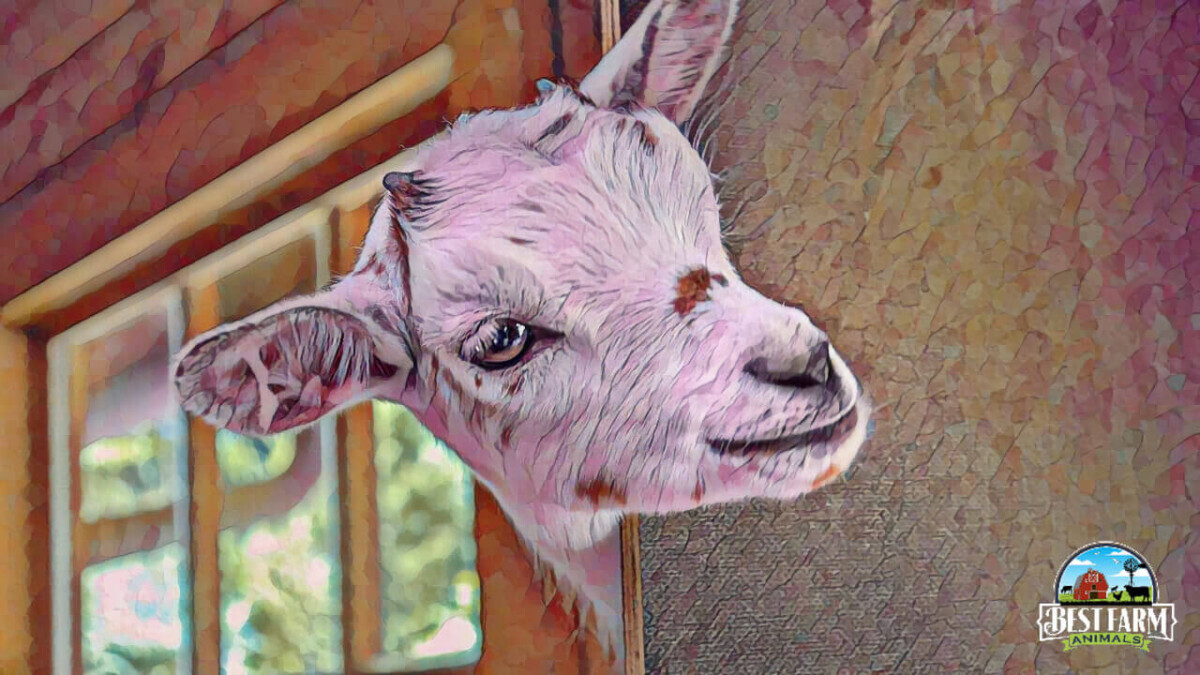
2. Potty Training for Goats
Goats can be potty trained for outside pee breaks. However, like rabbits, goats constantly leave little round fecal balls all over the floor. Goat poop is a frequent source of parasites like worms and other organisms, and having that in your house isn’t advised for hygienic reasons.
To teach your goat to accept a diaper can be a challenge, but persist, reward, and work slowly. Your goat would need to be used to being handled, groomed, and held. If the goat is wild, you’d do better to clean up the mess and forget about the nappy.
Start with an appropriate size diaper. The ones with sticky wings are best, as these quickly tighten onto the goat’s belly. You can make a little hole for the tail to have free movement, but this isn’t necessary.
The secret is to fit the diaper, then praise your goat verbally and offer them a special treat. Soon, your goat will stand ready when you want to fit their diaper. Ensure you remove the nappy every half hour to avoid the goat getting a diaper rash.
If you want to teach your goat not to pee in the house (#smellybusiness), you can start by keeping your goat in an appropriate-sized dog crate during the night. When it’s sun up, and the goat wakes up, you should immediately carry your goat out to a grassy spot, encouraging them with a verbal command like “go potty.”
Once the goat has peed, you must praise them excessively and offer them a special treat like a goat-friendly cookie or a carrot to really make it a special thing for them. Soon, they will associate the verbal command with having a pee break and getting a reward.
3. Follow the Leader
Goats are herd animals and naturally like to follow each other. They love fun and chasing each other, so use this to your advantage. Follow your goat, then turn around and walk away, praising your goat when they take a few steps toward you.
If you struggle with getting those first few steps, you can use the leash to teach them.
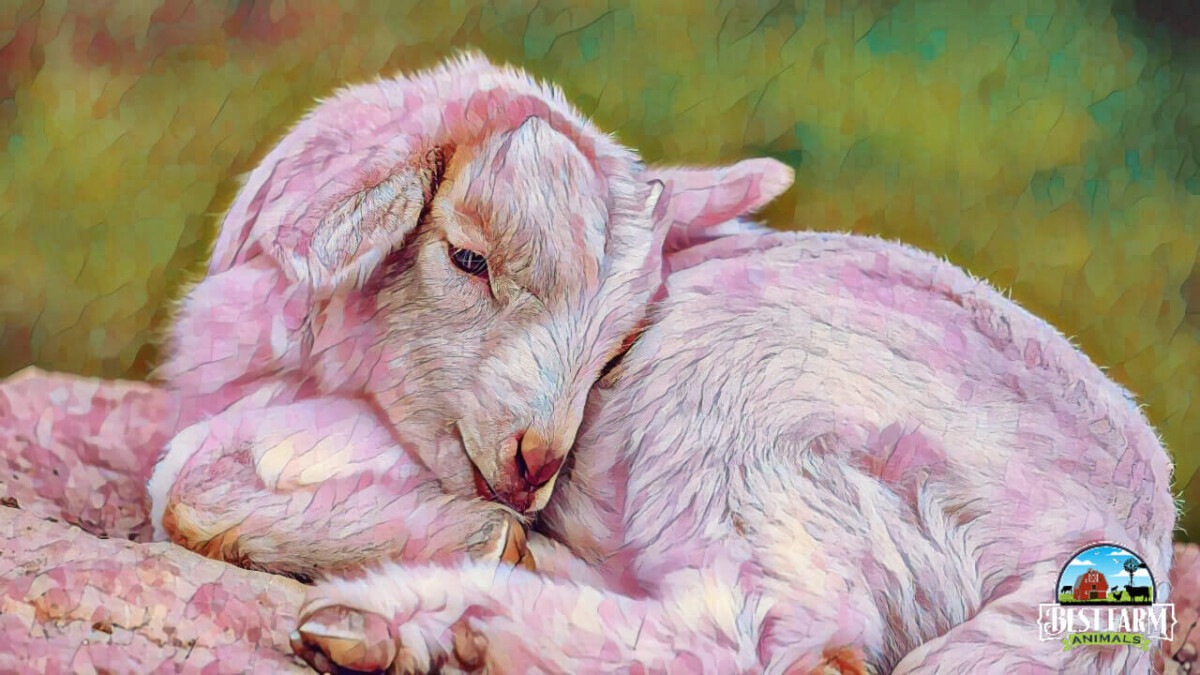
4. Walking on a Leash
With young goats, it’s always a great idea to fit a good quality collar when they are a few days old. The collar makes it easier to catch your goat kids, and you can naturally progress to having them imprint on you and leading them later.
Start by attaching an extra-length leash to your goat’s collar to teach the walk on a lead. Walk a few steps, letting the lead remain slack. Suppose your goat follows, praise and reward. However, if your goat doesn’t, let the lead tighten slightly, apply a little consistent pressure, and wait. Don’t pull your goat. Just wait. As soon as they step forward, reward them by letting the leash go slack. Praise and offer a snack when they have walked up to their spot next to you.
Important: The goat needs to move their feet, and you need to wait. Don’t step toward them, and don’t get into a tugging contest. Never hold food out to lure your goat forward. They must decide to step forward to learn.
5. Jumping Up and Down Stuff
Once you’ve trained your goat to walk on the leash, you can extend this. Teach jump onto, off from, and over obstacles. Goats LOVE this game, so play it frequently. Use a light tug on the leash to help the goat understand they must jump up or down. Reward with scratches and treats when your goat has done as asked.
6. Standing at the Milking Stanchion
If you have a little doe or nanny goat, you will eventually have to milk her if she has kids (or if she has a phantom pregnancy). If you plan on letting the kids suckle until the milk dries up, you probably don’t have to milk your goat regularly, but it’s a good idea to teach her how to stand for milking anyway. Surprisingly, goat’s milk is in high demand and is nutritionally superior to cow’s milk.
Milk goats on a raised platform called a stanchion, which helps the person milking them not have to crouch or bend over. However, it’s vital that the goat stands still and allows the milker to handle their teats and milk them.
It’s not only a daily part of owning a goat, but having a nanny goat suffer because her udder is swollen will cause significant pain, inflammation, and even infection (known as mastitis).
To teach your nanny goat to stand to be milked:
- Start by rewarding her when she lets you tie her head to the stanchion rail.
- Gently touch her, speaking in soothing tones, and then milk the teats.
- If she kicks at you, use a hobble to tie the goat’s back legs to the back of the stanchion.
Hobbles ensure your goat doesn’t get hurt or damage her legs, while milking relieves the nanny goats as having full udders is painful.

7. Standing on Their Back Legs
Teaching a goat to “stand up” on their back legs uses an instinct. Goats love green leaves, so they often stand on two legs to nibble at branches.
Again, you can use the leash to gently tug them if they don’t quite understand what you’re asking. It’s a simple matter to teach this trick. Start with your goat next to you, then hold a treat just out of reach above their head. When your goat reaches for the treat, move it back behind them, encouraging them to go “up” while you gently raise the leash too.
When your goat raises both front feet off the ground, praise them and give them the treat. Repeat a few times, then ask them to “up” a little more until they are entirely up on their hind legs. Be sure not to hold the treat too far behind them, as you don’t want your goat to fall backward.
Never hold your goat up by the leash. The leash isn’t a restraining device.
8. Walking on Their Back Legs
Once your goat is happy to raise up on their back legs, you can progress to teaching them to walk on their back legs. Start by asking them up into the standing position. Then, move the treat a little forward and higher. Once they take one step, reward your goat and give them the treat. Don’t stop them if they want to return to a normal four-legs-on-the-ground position.
Repeat the exercise by asking again for “up,” then say “forward,” and move the treat accordingly. Remember to reward with each step. When your goat is happy to take that first step, you can move the treat further away, encouraging a second step.
Soon, your goat will be waltzing around you.
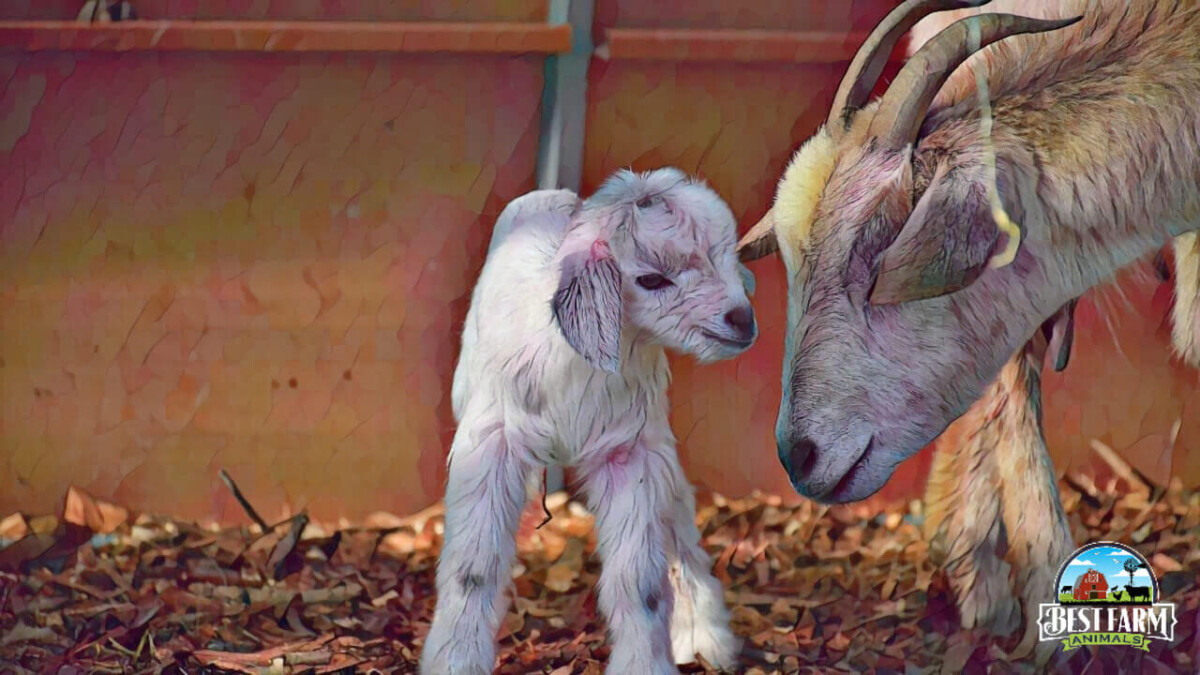
9. Pulling a Cart
One of the more dangerous tricks to teach a goat is to pull a cart. There are a few reasons why this is a trick best left to the goat pros.
Firstly, you will probably struggle to find a cart designed for goat dimensions. A goat can’t pull a cart designed for minis or for ponies. Your goat has a different body, and the bridging strap and harness will have to be specially designed for them.
The requirements for a goat to pull a cart are that they are happy with something dragging behind them, that they respond to leash pressure from behind and vocal cues to stop, walk, and run, and feel comfortable with restraint.
Introducing Restriction
Goats are still wild animals, and no wild animal likes to feel trapped. Therefore, you can’t start by strapping your goat into a cart. Instead, you would begin by walking your goat and dragging something like a car tire around behind you while you lead them. The goat needs to learn that the tire won’t hurt them and that having something move behind them isn’t a predator about to kill them.
Next, fit a harness correctly, ensuring it comfortably fits your goat and doesn’t cause pain or pinching. When you feel confident that they are quite happy with the harness, you can progress to hitching the harness to the tire. Take it one step at a time. If your goat becomes worried or looks scared at any time, you must go back to the previous training steps.
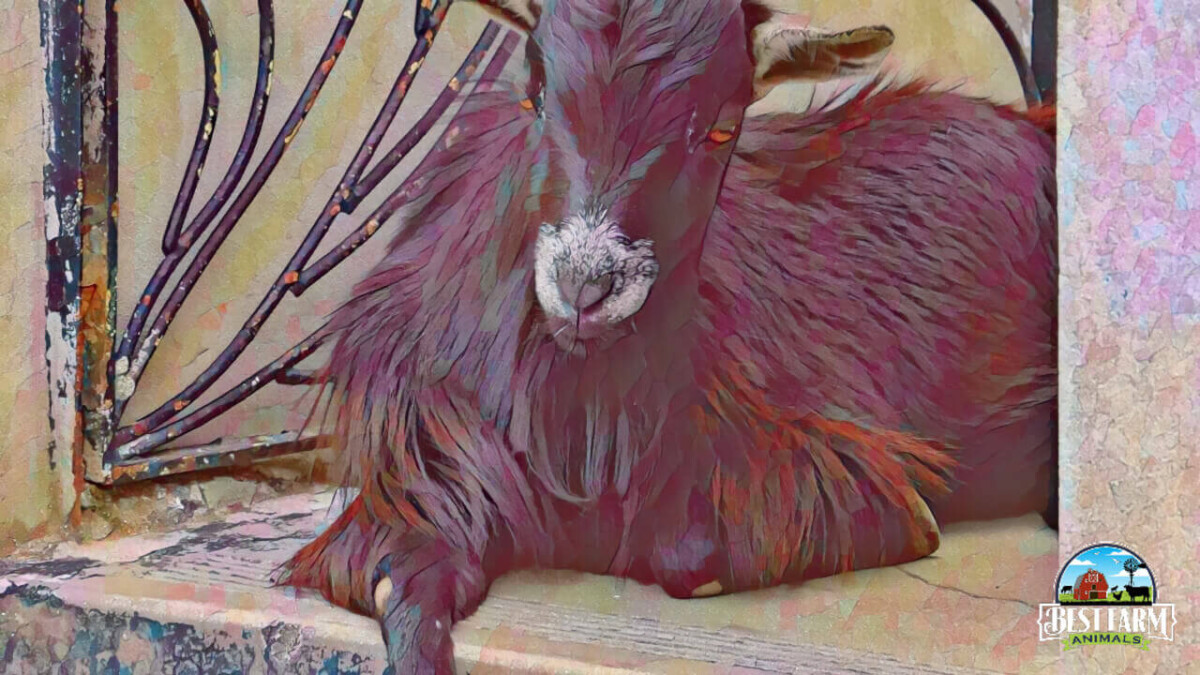
Make Learning Fun
Work slowly, train often, but keep it fun for your goat. Have your goat draw the tire to their meal place, then reward them with a treat afterward. When your goat likes their work, they will do so much better at it.
Did you know? Goats can carry as much as 25-35 percent of their body weight. They can pull far more than this, and two medium size goats can easily pull a single adult passenger in a well-designed cart.
Cart Troubleshooting: If you are training your goat to pull a cart, ensure the cart runs smoothly, doesn’t bounce behind them, and doesn’t make a heck of a lot of noise, either. Never over face your goat with what you ask. Having a more experienced goat in the traces with them will do wonders to calm the younger goat and help them transition to this very unnatural activity.
Goat Training Woes
You’ve done your preparation, got the best treats, and asked for only one step forward, but your goat decided to go bonkers and launch itself into the atmosphere like a rocket. Sometimes when training, things go wrong. It happens and isn’t a reflection on you or your goat.
Instead, it would help if you understood that goats (like people) also have down days. If you feel it’s one of those days for your goat, then it’s best to stop training and work on it again tomorrow. Even if your goat did everything perfectly today, they may still have a bad day today and not even be able to lead correctly.
Work with what the goat is offering you on this day. Keep your emotions under control, speak softly, and move slowly. If you get worked up, you could destroy your relationship with your goat in one bad morning.
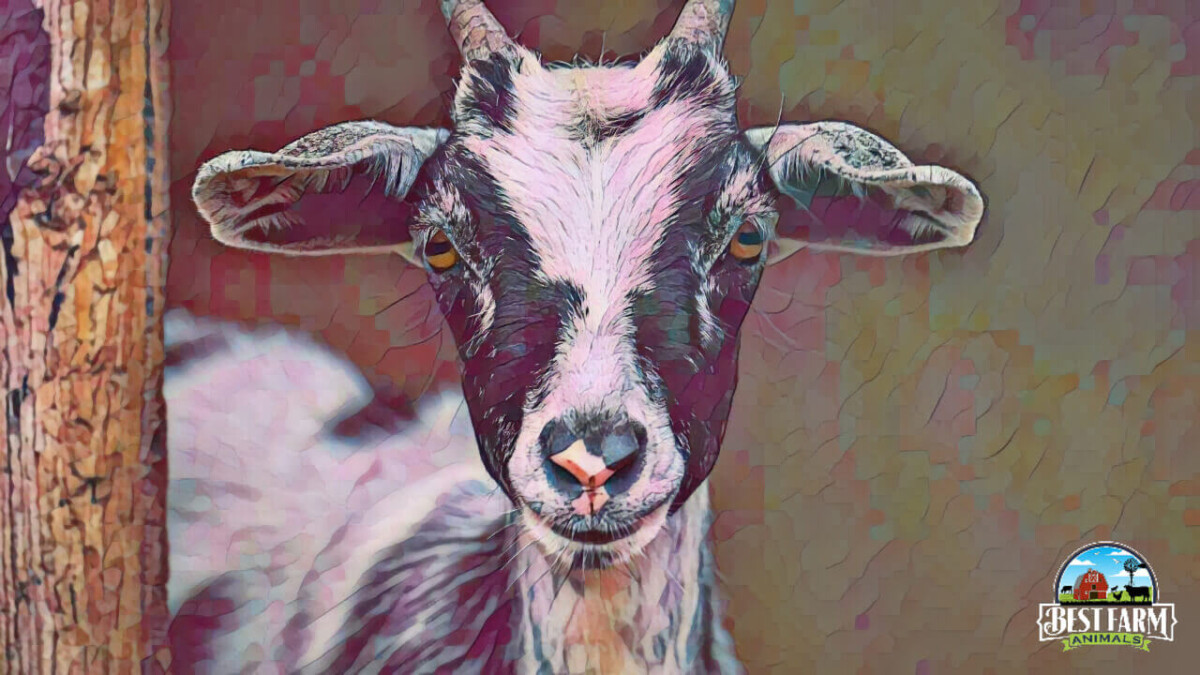
My Essential Goat Supplies
This list contains affiliate products. Affiliate products do not cost more but helps to support BestFarmAnimals and our goal to provide farm animal owners with accurate and helpful information.
This little giant bucket fits on a fence and this one’s easy to carry.
A sturdy dog collar is essential. Don’t do rope (they’ll break and tangle) or chain (injury!).
A Black Water Tub is way nicer than buckets that tip over. I like to get a 20 or 30-gallon in each pen so my goats have plenty of water, but you can get 100-gallons if you have a lot of sheep in one pen.
Loose minerals in a small bag or a Purina 50 lb bag, and a mineral feeder for free-choice is the best option. One side holds minerals, and the other holds baking soda. Don’t feed sheep goat minerals because it usually contains copper- something that is fatal to sheep.
Hoof trimmers are a necessity because you’ll need to trim your sheep’s hooves every few months. These are nice for the price.
Don’t make the mistake I made by waiting to order a drench gun before you need it. I was surprised by how often I use it. It helps with bloating, dehydration, and other ailments. Here’s a good drench, but you can also drench a bloat solution or water if dehydrated.
Digital Thermometor for when your lambs act sick. You’ll need to know if their temps are too low or too high so you can accurately diagnose the issues.
Vetericyn for wound care. It makes a big difference in a speedy recovery.
Check out this list of goat milk supplies you need if you have milk goats.
Conclusion
I adore my goats. They are simply stunning, and I love teaching them little things like accepting the collar, walking with me, and even going for car rides (with a nappy, of course). My goats are a regular feature at the local drive-through, and I love how they make people smile.
With correct training, my goats have learned to be well-socialized, calm, and friendly. They aren’t afraid of people and will happily go into new situations with me because of our bond.
What would you teach your goat?

